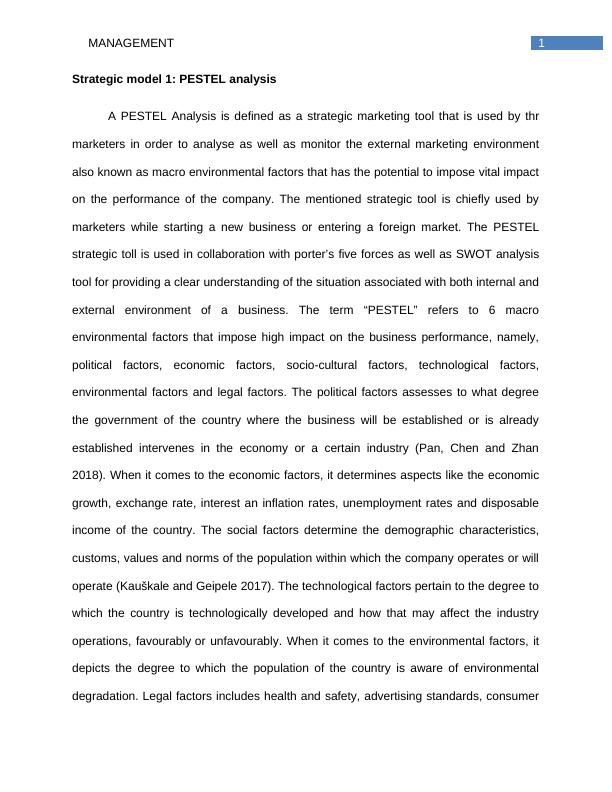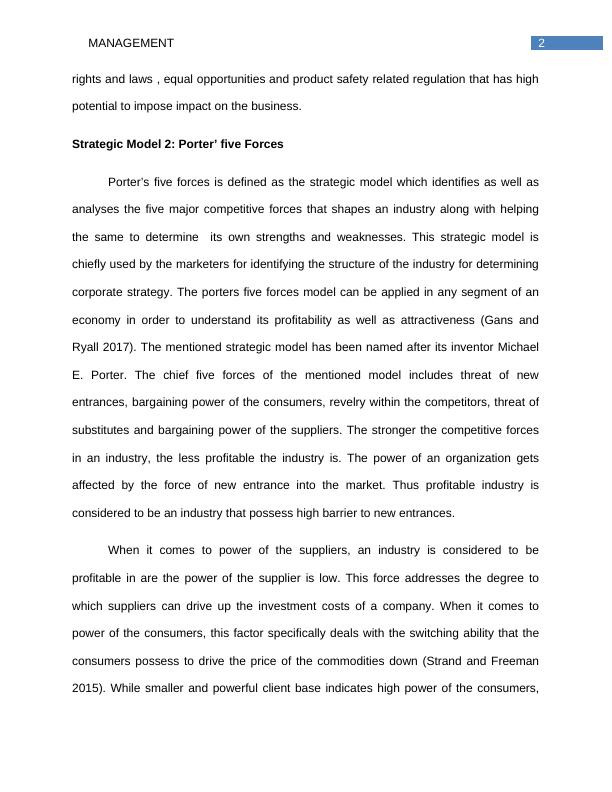Strategic Models for Management: PESTEL Analysis, Porter's Five Forces, SWOT Analysis, Ansoff Matrix
Write a comprehensive discussion of four strategy models with practical application to current business examples.
7 Pages1658 Words233 Views
Added on 2022-11-29
About This Document
This document discusses four strategic models used in management: PESTEL analysis, Porter's Five Forces, SWOT analysis, and Ansoff Matrix. It explains how these models help analyze the external and internal environment of a business and make informed decisions. The PESTEL analysis focuses on macro environmental factors, while Porter's Five Forces analyzes competitive forces. SWOT analysis evaluates strengths, weaknesses, opportunities, and threats, and the Ansoff Matrix explores growth strategies.
Strategic Models for Management: PESTEL Analysis, Porter's Five Forces, SWOT Analysis, Ansoff Matrix
Write a comprehensive discussion of four strategy models with practical application to current business examples.
Added on 2022-11-29
ShareRelated Documents
End of preview
Want to access all the pages? Upload your documents or become a member.
Competitive Strategy | Report
|8
|2118
|19
Importance of PESTLE, SWOT and Porter’s Five Forces Analysis in Competitive Strategy
|11
|2042
|463
Strategic Management: Analysis of Primark
|12
|3785
|2
Strategic management helps an organization
|8
|1944
|27
Critique of Strategic Concepts: Porter's Five Forces and PESTLE Analysis
|4
|807
|296
Strategic Analysis of Qantas Airlines: PESTEL, Five Forces, SWOT, and Generic Strategy
|7
|1808
|477



